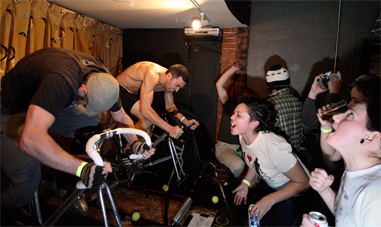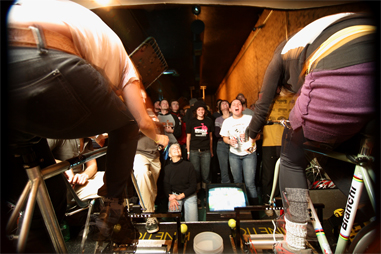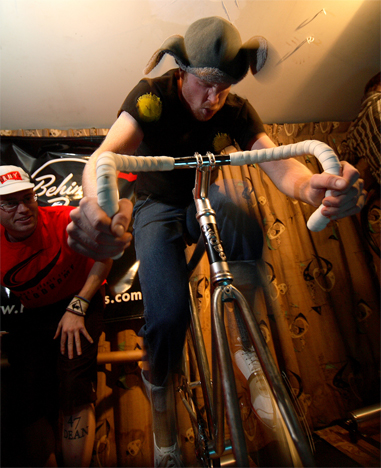It’s a Friday evening and the air at Grumpy’s Bar & Grill in Minneapolis is abuzz with the electricity of weekend release. Friends backslap and crowd six to a booth. Coats and bags and bike helmets pile up on the floor. “Take note of the puke bucket,” someone yells as I elbow through the crowd, stepping over cords and onto a little stage.
It’s my turn to pedal the stationary bike hooked up to the computer. I have 20 seconds to sprint and spin along an imaginary 500-meter course. “GO TIGER!” the screen flashes. And thus I start my ride.
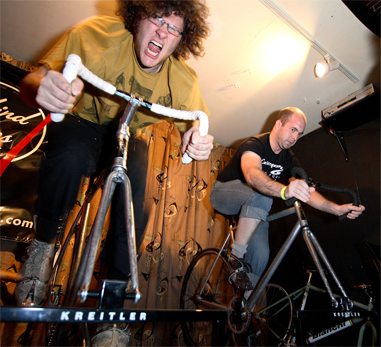
photo: TC Worley
This is goldsprint racing, a rising offseason cycling activity that melds a stationary bike trainer with a videogame. Riders pedal to move wheels on a computer-connected roller system, transferring power output to its virtual equivalent onscreen, where an animated biker ticks along.
Faces go beat red in seconds, nostrils flare, and rubber literally burns as riders start up and spin full bore on aluminum rollers. Each 20-second session provides a great physical test for the rider as well as an entertaining spectacle for bar patrons in the crowd. The puke bucket stands ready for both causes.
“Come on, come on!” the emcee screams. I’m halfway through my session, an elimination round where riders go solo to prove their worth. My head is down, body leaned out over handlebars. I’m gasping, heart racing, the room fading in and out, bursts of light and audible flashes. “Five seconds to go,” someone shouts.
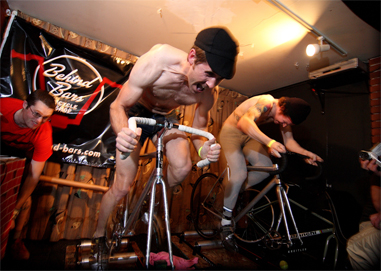
photo: TC Worley
Goldsprints — which were popularized in cities like New York and London in recent years — have a historical connection to roller racing, a similarly obscure format that’s been around for decades. Roller racing employs a mechanical system to move clock arms on a large dial face. Each revolution of the roller under a rider’s wheel transfers to gears that measure and pace off speed and distance traveled.
For goldsprints, computer code and magnet sensors are used in lieu of gears and clock dials. At the Grumpy’s event — which was the first in a series of four “ColdSprints” held last year at the bar — a plasma screen over the stage revealed riders’ distance traveled and virtual speed in miles-per-hour readouts.
